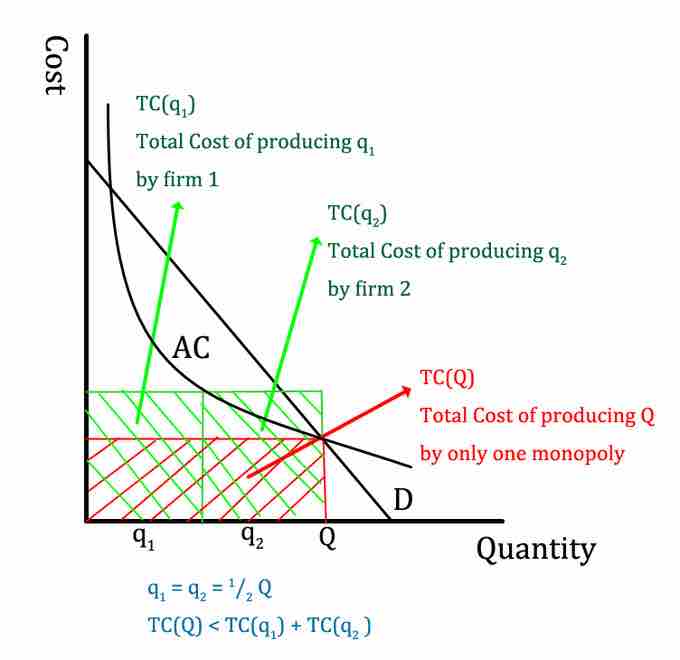Natural monopolies occur when a single firm is able to serve the entire market demand at a lower cost than any combination of two or more smaller firms. For example, imagine there are two firms in a natural monopoly's market and each of them produces half of the quantity that the monopoly produces. The total cost of the natural monopoly is lower than the sum of the total costs of two firms producing the same quantity .

Natural Monopoly
The total cost of the natural monopoly's production is lower than the sum of the total costs of two firms producing the same quantity.
Cost Structure
A natural monopoly's cost structure is very different from that of most industries. In other industries, the marginal cost initially decreases due to economies of scale, then increases as the company experiences growing pains (as employees become overworked, the firm's bureaucracy expands, etc.). Along with this, the average cost of production decreases and then increases. In contrast, a natural monopoly will have a marginal cost that is constant or declining, and an average total cost that drops as the quantity of output increases.
Fixed Costs
Natural monopolies tend to form in industries where there are high fixed costs. A firm with high fixed costs requires a large number of customers in order to have a meaningful return on investment. As it gains market share and increases its output, the fixed cost is divided among a larger number of customers. Therefore, in industries with large initial investment requirements, average total costs decline as output increases. Once a natural monopoly has been established, there will be high barriers to entry for other firms because of the large initial cost and because it would be difficult for the entrant to capture a large enough part of the market to achieve the same low costs as the monopolist.
Examples of natural monopolies are water and electricity services. For both of these, fixed costs of building the necessary infrastructure are high. The cost of constructing a competing transmission network and delivering service will be so high that it effectively bars potential competitors from entering the monopolist's market.